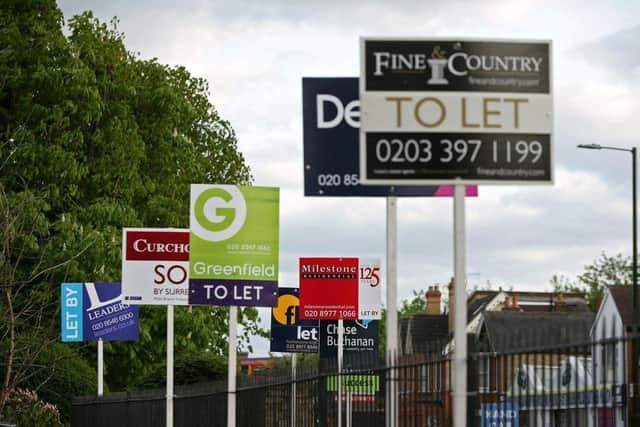A third of privately rented homes in Yorkshire are not fit for purpose and standards are 'getting worse'
Northern Housing Consortium’s (NHC) research shows 37.6 per cent of these properties failed to meet the Government’s Decent Homes Standard in 2020 – that is the highest proportion of any region in England.
The consortium, which represents councils and housing associations across the North, found almost 28 per cent of rented properties in the region contained hazards which pose a risk to tenants safety, 15 per cent had damp and almost 40 per cent had a poor energy efficiency rating.
Advertisement
Hide AdAdvertisement
Hide AdAnd despite the poor state of many properties, the average rent in Yorkshire has risen by 10 per cent this year, NHC added.


Tracy Harrison, NHC’s Chief Executive, said: “The Yorkshire and Humber region has the lowest standards of private rented accommodation of any region. It’s clear that standards are already poor and getting worse.
“It is imperative that the new Prime Minister accelerates the Renters Reform Agenda and doesn’t let the standard of private rented housing in Yorkshire continue to slide. Otherwise, the Government will fall way short of hitting its target of halving the number of non-decent rented homes by 2030.
“The need to level up housing quality is vital in Yorkshire and the Humber, where homes are older, suffer from a lack of investment.”
Advertisement
Hide AdAdvertisement
Hide AdThe Government’s Decent Homes Standard states properties must have “reasonably modern” facilities, as well as effective insulation and heating, and not have any hazards or require major repairs.”
All social housing is required to meet that standard, but privately rented homes are not.
However, the Government published its Fairer Private Rented Sector white paper in June, which aims to introduce a legally binding standard on decency for landlords.
Across the North, around 17 per cent of the population live in 1.2m privately rented homes.
Advertisement
Hide AdAdvertisement
Hide AdBut the NHC found around a third of those properties were substandard in 2020. The national average stood at 22.8 per cent.
In England, 4.4m households live in privately rented homes and 1.3m have children.
At the launch of the Fairer Private Rented Sector white paper, then-Levelling Up Secretary Michael Gove said around 1.6m people are living in "dangerously low-quality homes".
"The reality today is that far too many renters are living in damp, dangerous, cold homes, powerless to put things right, and with the threat of sudden eviction hanging over them," he said.
Advertisement
Hide AdAdvertisement
Hide Ad“We’re committed to levelling up quality across the board in the private rented sector and especially in those parts of the country with the highest proportion of poor, substandard housing – Yorkshire and the Humber, the West Midlands, and the North West.”
The Government said it remains committed to improving the standard of privately rented homes across the country.
A spokeswoman said: “Our Renters’ Reform Bill is the biggest shake up of the private rented sector in 30 years. By extending the Decent Homes Standard we will give renters in the North and across the country the legal right to a safe home.
“We have already given councils robust powers to crack down on rogue landlords, including fines of up to £30,000 and banning orders on those who rent out unsafe accommodation.”
